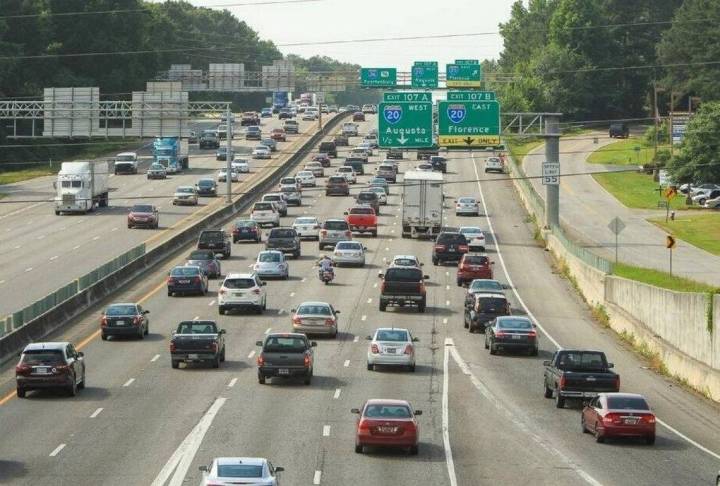But it’s “Malfunction Junction”, which is about to get a much-needed rebuild

Image courtesy of The State
I’ve lived in Columbia since college with the exception of four years in Winnsboro, where my husband and I landed to split the distance between our jobs. The people in Winnsboro were delightful, but we were chastised routinely because our travel and work routines kept us away from home. The town and church ladies were especially bothered that they couldn’t drop in during the week.
A tornado that temporarily separated our growing family caused us to reevaluate our choices and to move jobs and home to one location. After much debate, Columbia won because it wasn’t easy for a female lawyer to find a small-town job in the 1980s. Let me rephrase that. A female lawyer could find a job in a small town if she didn’t need much pay or respect. But that’s a whole “nother” story, as we say in the South. Suffice it to say the city won.
Although schools and housing prices were much more promising in the Irmo area north of Columbia, we decided we didn’t have the patience to handle the commute that ran through the intersection of I-20 and I-26, commonly called “Malfunction Junction”. So I have never battled that disaster area routinely. But any Friday afternoon escape from “Famously Hot” Columbia to the cool of the North Carolina mountains required bravely timing the travel and negotiating the traffic.
I’ve seen friends and co-workers schedule their travel times to downtown Columbia to avoid hitting that area during rush hour. And I’ve seen them justify the commute because of beautiful lakefront homes and great schools. I get it! I just never had the patience for it! I’ve heard tales of the 12-mile commute taking an hour or more. That would require a big investment in audio books for me!
The Department of Transportation plans to alleviate my friends’ pain, but it’s going to take awhile. If you Google “Carolina Crossroads”, the name the DOT has given the project, you will be able to read about the ten-year plan to fix the problem. Yes, I said ten years. Here is a time-line projection.
Why will it take so long? First, the properties must be acquired. The DOT says it plans to spend $240 million to acquire real estate including gas stations, homes, apartment buildings and a Motel 6. Dirt lawyers, if you handle condemnations as a part of your practice, this may be a time for you to shine!
The new interchange will add lanes to ease merging issues and will connect I-20, I-26 and I-126. The goal is to reduce the number of accidents and the amount of time commuters spend negotiating the area. Apparently 134,000 cars travel through the interchange every day. The $1.5 billion project is being split into five phases.
The first phase includes Colonial Life Boulevard. The second includes Broad River Road. The third will involve the main interchange of the interstate highways and will include St. Andrews Road and Bush River Road. The fourth phase will include Harbison Boulevard, and the fifth and final phase will involve widening I-26 west of St. Andrews Road.
The DOT says one of the problems with the long-range project is that contractors are reluctant to bid on the massive project. That’s one reason the project was divided into phases. We began to hear rumblings that the project was coming as early as 2015, but the federal government didn’t sign off until spring of 2019.
I can’t wait to hear the stories about how construction will affect the commute. And our vacations may have to avoid the mountains for the next ten years! But we’re all looking forward to the project’s completion!



